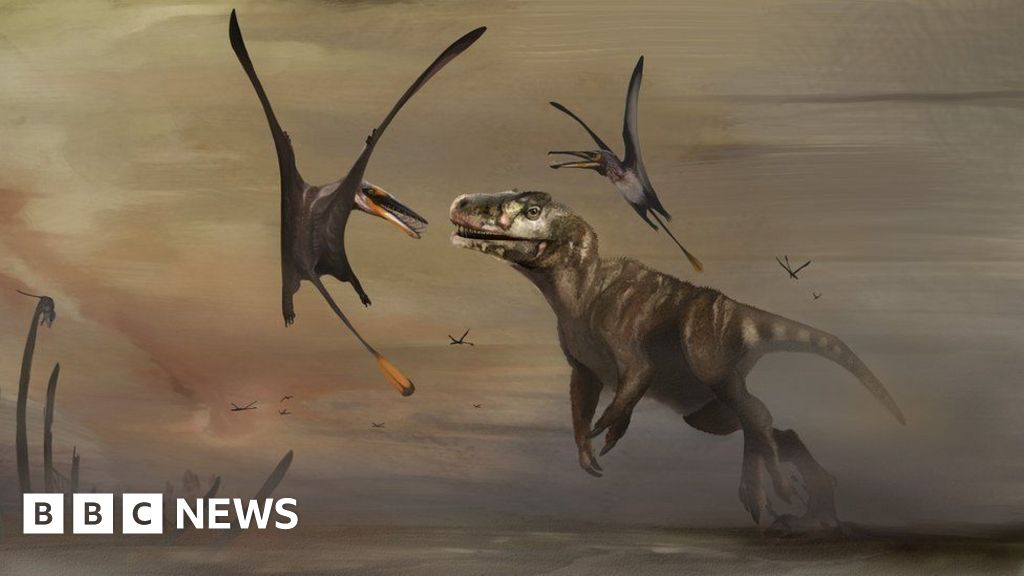[ad_1]
It was 1982 and 22-year-old first-year Leicester University PhD student Julian Andrews was on a field trip to Skye’s rugged north coast.
The young scientist was not looking for dinosaurs.
He was seeking to better understand the environmental conditions the island’s ancient Middle Jurassic sedimentary rocks were formed in.
“It was towards the end of the morning and, as you do when you are in the field, I walked away from where we were working to look at the whole context,” says Andrews, today an emeritus professor at the University of East Anglia.
“I put my hand on a block of limestone, just to steady myself.
“I looked under my hand and thought ‘Oh, that’s funny. There’s sort of a lump there’.”
Seeing the shape of three toes he realised he had stumbled on a dinosaur footprint.
Earlier in the trip, the scientist’s supervisor, John Hudson, had said no dinosaur fossils had been found on Skye – despite the rocks being the right kind for such finds.
Prof Andrews said: “I went back to him and I said: ‘Did you say no-one’s ever found any dinosaur remains on Skye?’
“‘Well, I think we have now’.”
[ad_2]
Source link



